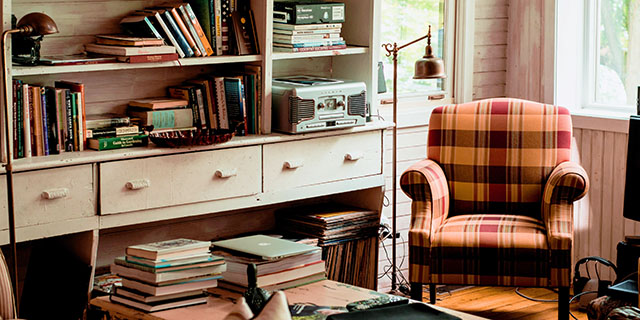
A simple guide to premiums – how to save on your insurance
Car insurance
Components of your car insurance premium
If you compare your car insurance premium with other people's, you will see that there are some differences. Why is this the case? Several factors determine the amount of your car insurance premium. These include:
- The type of car you are insuring: the insurance premium will usually be higher for a powerful SUV than for a small, compact car, for instance.
- The cover you choose: the more you insure, the more expensive your car insurance premium will be.
- Your personal details: experienced drivers usually pay lower premiums for their car insurance than people who have only been driving for a short time. Find out what else new drivers should bear in mind in our guide.
- The amount of your deductible: if you opt to pay more of the cost yourself in the event of a claim, your car insurance premium will usually be lower.
- Where you keep the vehicle: city-centre outdoor parking space or garage in the countryside? The risk level is calculated differently according to where you park your car – and so is your car insurance premium.
In addition, car insurance premiums vary depending on the company you insure your car with. For that reason, it is best to get several quotes before taking out a policy. The easiest way to obtain a quote from us is with our premium calculator.
Incidentally, if you do get a number of different quotes, be sure to compare them carefully. Find out how to do this and what to look out for in our guide to comparing car insurance policies.
Why your car insurance premium may change
If your car insurance premium increases from one year to the next, there could be several reasons for this. For example:
1. Your bonus level has changed
No claims submitted in the last year? In this case, you may have been upgraded to a lower bonus level, leading to a reduction in your car insurance premium. Conversely, in most cases, your premium will increase if you submit one or more claims in a year. By the way, you can avoid an increase in your bonus level after a claim by taking out no-claims bonus protection in advance. Read our guide to find out more.
2. General price developments
Rising inflation and general cost increases also have an impact on your premium. For example, state-of-the-art electronics in vehicles make repairs more complex and therefore more expensive. And a year with an above-average number of hailstorms also affects everyone's premiums. By the way, if you want to know what to do in the event of hail damage, please read our guide on the subject.
3. A temporary discount
Perhaps you benefited from a promotion with a temporary discount in the first year of your policy? Once this ceases to apply, your premium will become more expensive.
How to save on your car insurance premium
Although you cannot change the entire amount, there are still a number of ways to lower your car insurance premium:
- Pay your premium annually rather than semi-annually. This will reduce your premium because it saves your insurance company administrative work. Making a change like this is easy with us – simply use our contact form.
- Increase your deductible: people who opt to pay more themselves in the event of a claim usually save on their premiums.
- Refrain from taking out unnecessary types of cover. For example, if your household contents insurance includes "theft outside the home" coverage, you generally don't need cover for "property carried in the vehicle" in your car insurance as well. Or if your car is getting a bit long in the tooth, it may no longer be worth having fully comprehensive insurance and you can switch to partially comprehensive cover instead. Find out more about fully and partially comprehensive car insurance in our guide.
Want to optimise your insurance and save on your premiums? If so, please get in touch. We will be happy to help you.
Household contents insurance
Components of your household contents insurance
The premium for your household contents insurance is primarily based on the value of your household contents and your personal living situation. Do you live in your own home or in a rented one-bedroom apartment? How many people are there in your household? Do you own jewellery or valuable furniture or collector's items? In the event of a claim, you will be reimbursed in the amount of the insured value. The higher this is, the higher the premium.
Other factors include the deductible and the types of cover you select. Do you want your valuables to be insured outside your household as well? This is possible and sometimes makes sense, but it will affect your premium.
Our tip to ensure that you always have optimal cover: check the value of your household contents regularly. This way, you can see if the value and the sum insured are still correct. If you are underinsured, the indemnity you receive in the event of a claim will be too low. Read our guide on the topic of underinsurance and calculate the sum insured for your household contents with our premium calculator.
Why your household contents premium may change
Your household contents premium may change for several reasons. It may do so in the following cases, for example:
- Many insurance companies regularly adjust your sum insured in line with inflation. This prevents you from gradually becoming under- or over-insured.
- Claims are becoming increasingly complex and expensive – for example, when houses are fitted with smart home electronics that control the lighting, heating and ventilation systems. In addition, climate change is increasing the rate of storm and flood damage, which in turn has an impact on general premium trends.
- People who submit an above-average number of claims are also likely to see their premiums go up. This is how insurance companies ensure that premiums remain fair for all of their customers.
How to save on your household contents insurance premium
Here are three easy ways to lower your household contents premium:
- Increase your deductible.
- Do not take out any coverage types that you no longer need.
- Avoid surcharges by switching to annual payment You can take care of this easily yourself using our online form.
We will be happy to help you optimise your insurance. Just get in touch.
Conclusion
SERVICES
Contact
Downloads
Report a claim
Car insurance
Household contents insurance


